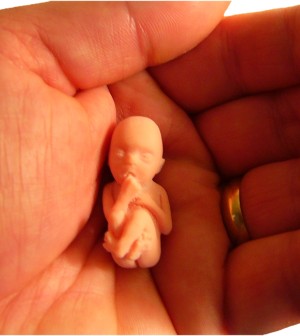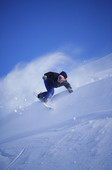- Skip Storing This Everyday Product in the Fridge Door
- Green Tea + B3 Pairing May Boost Brain Health
- Navigating Your Midlife Crisis: Embracing New Possibilities
- City Raccoons Showing Signs of Domestication
- Mapping the Exposome: Science Broadens Focus to Environmental Disease Triggers
- One Week Less on Social Media Linked to Better Mental Health
- Your Brain Changes in Stages as You Age, Study Finds
- Some Suicide Victims Show No Typical Warning Signs, Study Finds
- ByHeart Formula Faces Lawsuits After Babies Sickened With Botulism
- Switch to Vegan Diet Could Cut Your Greenhouse Gas Emissions in Half
Dealing With Cold Weather Injuries


If exercising outdoors is on your list of New Year’s resolutions, don’t let the cold weather stop you, suggests the National Athletic Trainers’ Association (NATA).
But the group cautions that it’s essential to be aware of possible injuries associated with low temperatures, and to take certain safety precautions when heading outdoors in the winter months.
“Many cases of cold-related injuries are preventable and can be successfully treated if they are properly recognized and treated efficiently and effectively,” said Thomas A. Cappaert, the lead author of NATA’s position statement on environmental cold injuries, in an association news release.
“With advance planning and education, we can all enjoy cold weather activities as long as we adhere to protocols that ensure safety and good health first,” Cappaert, a professor of biostatistics at Rocky Mountain University of Health Professions in Provo, Utah, said.
Children and people older than 50 should take frequent breaks from the cold. And people of all ages should take steps to reduce their risk for injuries and illnesses associated with exposure to the cold, cautioned NATA in the Journal of Athletic Training.
Among their recommended precautions:
- Dress in layers. Be sure to wear insulating clothing that allows evaporation and minimal absorption of perspiration.
- Take breaks. Be sure to warm up inside when needed. Outside, try external heaters or wear additional layers of clothing.
- Eat a well-balanced diet.
- Drink plenty of water or sports drinks to stay hydrated.
- Avoid alcohol.
Winter athletes aren’t the only people at risk of cold-related injuries, according to NATA. Those who play traditional team sports with seasons that last into early winter or begin in early spring, military personnel, public safety or public service personnel and construction workers have a higher risk of cold-related injuries.
The most common cold-related health issues fall into three categories:
Lower core temperature, such as hypothermia: Signs of hypothermia include shivering, an increase in blood pressure, difficulty with fine motor skills, trouble with memory, and feeling lethargic. According to NATA, the body’s core temperature also falls between 98.6 and 95.6 degrees Fahrenheit.
In these cases, wet or damp clothing should be removed and replaced with warm, dry clothes or blankets. People with hypothermia should also be moved to a warm place with shelter. Heat should be applied to the torso, armpits, chest and groin only. Consuming warm, nonalcoholic drinks and food can help ease shivering and help the body produce heat. Avoid friction massage on the skin, because it could worsen damage from frostbite.
Freezing injuries of the extremities, including frostbite: Symptoms of superficial frostbite include swelling, a red or gray appearance to the skin, stiffness and tingling or burning, according to NATA.
When frostbite occurs, the skin should be re-warmed with warm clothing. If normal color doesn’t return after a few minutes, the extremities should be submerged in warm water for up to 30 minutes. Once thawing is complete, the skin will become more pliable and return to a normal color. Do not use friction massage or apply direct heat, such as a heating pad, to the affected areas.
Nonfreezing injuries of the extremities, such as chilblain and trench foot: Chilblain occurs after more than an hour of exposure to wet, cold temperatures below 50.6 F for more than 60 minutes. Small red bumps may appear. Other signs of this condition include swelling, tenderness, itching and pain, according to NATA.
When this happens, wet or tight clothing should be removed. The affected area should be washed and dried gently, elevated and covered with warm, loose, dry clothes or blankets. Avoid touching any blisters that develop and do not apply friction massage, creams or direct heat.
Immersion (trench) foot develops when exposure to cold, wet environments lasts between 12 hours and four days. Signs of this injury include pain, burning, tingling or itching. People with this condition may also lose sensation or develop bluish or blotchy skin, swelling or blisters. Their skin may also get soft and break down, according to NATA.
In these cases, the affected area should first be cleaned and dried. Next, apply warm packs or soak the area in warm water for five minutes. To prevent this injury, be sure to change cold or wet socks and allow shoes to dry before using them, NATA recommended.
More information
The U.S. Centers for Disease Control and Prevention provides additional safety tips for outdoor activities in winter.
Source: HealthDay
Copyright © 2025 HealthDay. All rights reserved.










